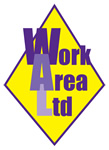 Under Health and Safety legislation, employers have an obligation to carry out DSE (display screen equipment) workstation tests to protect their staff from repetitive strain type injuries associated with inadequate working environments. Office chairs are a key part of your workstations and must be included in any DSE tests.
Under Health and Safety legislation, employers have an obligation to carry out DSE (display screen equipment) workstation tests to protect their staff from repetitive strain type injuries associated with inadequate working environments. Office chairs are a key part of your workstations and must be included in any DSE tests.
How often should you carry out DSE tests?
The Health and Safety Executive advises DSE workstation tests should be carried out when:
- A workstation is set up
- A new person starts to use an existing workstation
- Substantial changes are made to a workstation
- If staff experience pain or injury as a result of using the station
What’s included in a workstation test?
The test should look at the entire workstation and its use. As well as desks, the seating must be assessed, and the position of chairs and footrests considered. The work being carried out at that station should also be included in the assessment. For example, users in an office will have different needs to people in laboratory environments.
The individual needs of each user must be taken into account. Shorter members of staff or lab workers might need footrests to correct their working position and posture.
Check the chair is appropriate to the user and in a good state of repair. Larger employees might need chairs with a greater weight-bearing capacity.
Consider the user’s work load and schedule regular breaks or changes of activity to ensure they don’t spend too long at the work station.
Chairs in the workstation
All workstation seating should be in a good state of repair. Damaged or inadequate seating should be removed and replaced immediately. Chairs should have adjustable height and tilt mechanisms to allow the user to look directly at the screen without leaning forward or back. If the chair has arms, check they don’t interfere with the user’s working position or prevent them getting close enough to the workstation.
The chair should support the lower back allowing the user to sit up straight in the chair with their shoulders relaxed. Feet should be flat on the floor without putting pressure on the back of the user’s legs. If necessary, use an adjustable footrest to achieve the correct position.
According to the Department for Work and Pensions, musculoskeletal problems accounted for the loss of 30.6 million working days in 2013. Well-designed workstations, correct seating and educating staff is essential to keep our work force fit, healthy and working.
Image credit: 123rf

